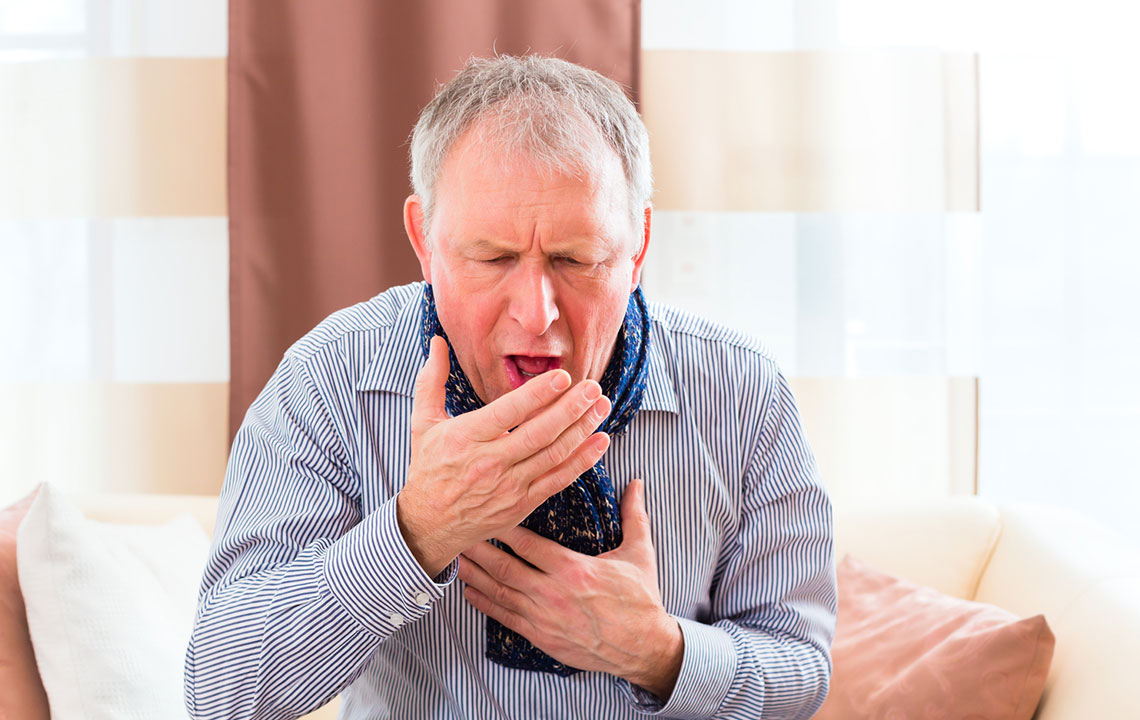COPD – The Causes, Symptoms and Treatment
Chronic obstructive pulmonary disease or COPD is a condition that afflicts the normal functioning of the lungs. The disease is characterized by the inflammation of the lungs, thereby causing an obstruction in the flow of air through the organs. The term is used to collectively denote several diseases related to the lungs, including refractory asthma, emphysema, and chronic bronchitis. An individual with COPD will have trouble in breathing, constant mucus production, and coughing and wheezing.

The disease is reported to be majorly caused by exposure to irritants over time. These irritating elements enter the lungs and airways, causing damage that triggers COPD. While the main cause of the condition is smoking of tobacco, there are also other lung damaging causes that can trigger the pulmonary disease. Some of the main factors that cause the development of COPD include the following:
- Smoking tobacco – As mentioned above, most of the cases of chronic obstructive pulmonary disease are a result of smoking. According to reports, more than 80 percent of cases of COPD are found among individuals who smoke. A burning cigarette releases more than 7,000 chemicals, and most of these are extremely harmful when inhaled. These toxins enter the airway and weaken the lungs, thereby disrupting their function of fighting infections. It also narrows the air passage and leads to swollen air tubes. All the factors work in contributing to the development of COPD.
- Environmental factors – The air in the surroundings or the environment can contribute as a cause of COPD. The quality of air that individuals breathe in can have a big role to play in developing the condition. When one is exposed to polluted air such as dust, chemical fumes, and passive smoke for very long durations, it can trigger the pulmonary disease.
- Protein deficiency – In some people, COPD is caused by the deficiency of alpha-1, and this condition is reported among a very small number of people. The protein is essential as it functions as a protector of the lungs. It is generally a result of the genetic inheritance, wherein the body lacks the ability to produce alpha-1.
The symptoms of COPD are not noticeable until there is significant damage done to the lungs. As the condition worsens, the health of the organ deteriorates, and it is only then that the signs may come through. One of the common signs that may be experienced with COPD is of having episodes that are known as exacerbations. It is during this period that the signs become evident; these signs may include the following:
- Incessant coughing
- Difficulty in breathing after intense activities
- Mucus buildup, especially after waking up in the morning
- Swelling on the feet and ankles
- Rapid weight loss
- Fatigue
Symptoms can get more severe after the condition worsens. Medical care may be required immediately if there is intense trouble in breathing normally, and if there is confusion, followed by fainting and rapid heart beating.
Treatment for COPD
COPD cannot be cured. However, undertaking timely diagnosis and getting effective treatment will aid in managing the condition and leading a normal lifestyle. It can ease the symptoms, while also preventing further complications that are associated with its progression. Some of the common methods of treatment include the following:
- Oxygen therapy – In case of low oxygen levels, individuals are given supplemental oxygen that is administered using a mask or a nasal cannula. Typically, patients use a portable unit that is easier to use when on the go.
- Medication – The medications include bronchodilators that work by relaxing the muscles of the airways and widening the airways to enable easier breathing. The medications are usually taken with the help of nebulizers and inhalers. Also, there are medications known as glucocorticosteroids that work by reducing the inflammation of the airways. Doctors also recommend getting yearly flu shots or tetanus boosters that protect from infections throughout the year.
- Surgical treatment – Surgical treatments are undertaken for conditions that are very severe. Typically, it is used as the last resort when all the other forms of treatment fail. Bullectomy is a kind of surgery that involves the removal of large and abnormal bullae from the lungs. Lung volume reduction surgery is another kind of surgery that removes the damaged tissues in the lung. In the most extreme cases, lung transplantation is employed.
Apart from treatment, one must practice healthy lifestyle habits. This aids in alleviating the symptoms and provides further relief. For people who smoke, it is essential to quit smoking. One should also avoid inhaling polluted air and stay away from harmful chemical fumes. There is no specific diet that is recommended for people affected with the condition; however, consuming healthy foods with the right nutritional levels is important.